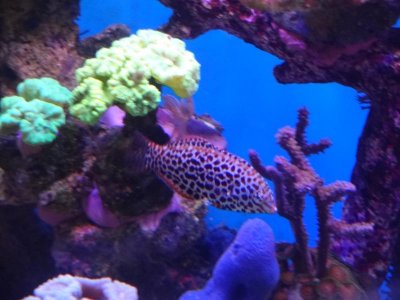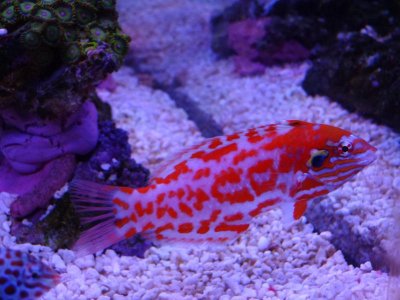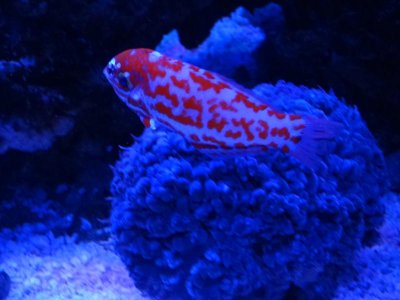Any idea why that happens to Leopards?Last time i didn't quarantine fish i lost every fish in the DT.
A proper leopard qt closely mimics the eventual DT it goes in to, i.e. Full of sand and live rocks for pod hunting while it acclimates to captive living, not the typical bare bottom qt with pipes and stuff. The key to getting these wrasses to be successful and alive is getting them to eat. Sadly of all the leopards that have died because of my attempts (think 6+ or so), I don't think I've ever seen them with external parasites (I.e. Ich, but very possible). I feel they died from the transport and acclimation process and lack of eating.
So even with 10-20 lbs of live rock let's say (assuming a small qt) it provides some eats for the leopards, but wrasses can decimate a pod population on that little of rock easily, in short time, unless it's continually replenished. Eventually you'll be turning it on to stuff like mysis or frozen pods, so weening them on to frozen foods.
So far my only successes with these leopards, albeit short time, has been throwing them into my DT.
- they eat- ALOT. In QT for whatever reason, with established rock and sterile water and equipment they all died. I don't know if it's the competition for food, hunger, movement of the water, but they go nuts for frozen pods and mysis during feeding time. What sucks for me is my male vermiculite gets up at 10 pm and the others are up and around at about 2-4 PM so I have to feed the tank twice which I normally never do. Unless one has a qt strictly for stuff like this, which I don't see many of us having, it seems tough. Seems like you have to set up a qt like this 2-3 months in advance for a leopard

-they appear more and stay longer in the open. In my trials, in the qt they seldom came up and when they did they came up to perish.
The only thing that seems consistent with treatment is using PP for the possibility of internal worms. The reading says they mainly come with them, but all of mine had full, fat bellies and very full bodies upon purchase. I've tried pp with them in qt to no success.
Of course ymmv but my four (2 female vermiculite, male, and male ornate) have done far better than my previous attempts. These are wonderful fish and my previous attempts swore me off of trying them again, until my buddy gets them cheap and and continually, weekly.
I guess Cali living has its perks sometimes.





